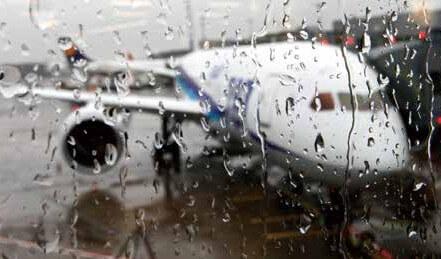Issue:
WHY JAL AND ANA TOOK THE UNUSUAL STEP OF GROUNDING BOEING’S VAUNTED NEW DREAMLINER

Once is happenstance, twice is coincidence. Three times it’s enemy action. So said James Bond adversary Auric Goldfinger.
Adopting the Goldfinger approach to crisis management, Japanese carriers All Nippon Airways and Japan Airlines took the unusual but understandable step of voluntarily grounding their fleets of Boeing 787 Dreamliners after each experienced lithiumion battery combustion incidents within 10 days of each other.
The first was in a JAL 787 parked at Boston’s Logan Airport on Jan. 7. ANA’s incident on Jan. 16 was on a domestic flight, forcing an emergency landing and a dramatic evacuation of the aircraft by emergency slides. It came after a rush of other 787 incidents, none of which was particularly serious, despite intensive media coverage. ANA’s reaction to take the “safety first” route was a brave but correct decision by president Shinichiro Ito to make in ultra safety conscious Japan.
With safety of the Japan made lithiumion batteries in question, the two airlines, two of the biggest customers for the Dreamliner, announced that the groundings would provide time for safety checks of all their aircraft, without specifying how long the process would take.
For both Japanese airlines, customer confidence in the 787’s safety is paramount. ANA, with the biggest global order of 66 airplanes, already has 17 in its fleet. JAL ordered 45 and currently owns seven. Neither plans cuts.
The U.S. Federal Aviation Administration (FAA), already reviewing the Boston incident, seemed initially taken aback by the two carriers’ action.
But within hours, they issued an Airworthiness Directive grounding all six U.S. based 787s all operated by United Airlines. Around the world other regulators followed suit. A total of 49 airplanes were grounded, including the 24 based in Japan. The last time the FAA took this action was in 1979, when the DC-10 was grounded after a fatal accident.
Teams of investigators from the U.S. and Japanese Transport Safety Boards, the FAA and the Japan Civil Aviation Bureau of the Ministry of Land, Infrastructure, Transport and Tourism (MLIT), Boeing boffins and manufacturers of the batteries and associated electrical systems have been working round the clock to investigate the problem, with no success as of this writing. There is speculation that finding a solution could take months.
Early suspicions of the batteries have been put on hold, as investigations to date show they were not overcharged. But questions linger why did they fail? Examination of the electric system continues a complex undertaking as components come from many sources. System designers are Thales, a French company. They chose the Japan made batteries, while the battery chargers are designed by a British company but manufactured in the U.S.
As the grounding goes on, it will affect the production plans and cashflow of many makers of parts and systems worldwide.
About 35 percent of the Dreamliner’s main components are made in Japan, involving key players in the nation’s aero space industry. Toray Industries provides the carbon fiber which is used for much of the aircraft’s construction. Mitsubishi Heavy Industries makes the wings, Kawasaki Heavy Industries produces the upper fuselage and the central wing box is made by Fuji Heavy Industries. The lithiumion batteries come from GS Yuasa. Toilet units are supplied by Jamco Ltd. If production of the aircraft is delayed, these stakeholders could be hit badly.
Despite lengthy test flying by the manufacturers, all new aircraft models experience glitches, euphemistically termed “teething troubles,” when introduced to the rigors of commercial operations. The 747 and the more recent Airbus 380 also suffered, though none called for grounding.
The Boeing 787 design is a radical change in the industry, with state of the art technologies never used before to such an extent. By using electrical power from the lithiumion batteries for functions previously handled by pneumatics and hydraulics, the 787 makes big weight savings. The same is true of the light composite materials such as carbon fiber in the wings and fuselage. The overall result is a ballpark figure saving in fuel consumption of about 20 percent.
For airlines, such an airplane is the answer to their dreams, allowing them to operate to many destinations which other airplanes cannot profitably reach.
ANA believed that being the 787 launch customer would help raise their profile in the global market. Long in JAL’s shadow, the carrier has always dreamed of being Asia’s number one airline. In April 2004 ANA ordered 50 of the aircraft, later increased to 66. They built their future business planning around the aircraft, and the slogan, “787 First to Fly,” was featured on promotion materials and business cards.
Though three years of delay, ANA stuck by their choice, and on October 26, 2011, operated the world’s first 787 commercial flight, a charter flight from Tokyo’s Narita airport to Hong Kong.
Now the airline is cancelling up to 60 domestic flights and an average of seven international operations a day. JAL, meanwhile, has cancelled a small number of international routes. To date the two airlines have announced flight cancellations up to mid February.
It’s ironic that the airline that boasted, “First to Fly,” was the first to ground the new airplane, but ANA strongly believes in the Dreamliner and hopes for a successful outcome as early as possible. For the time being the airline has no plans to radically its business plans and forecasts . . . but that could change.
Geoff Tudor writes for Orient Aviation, Hong Kong

